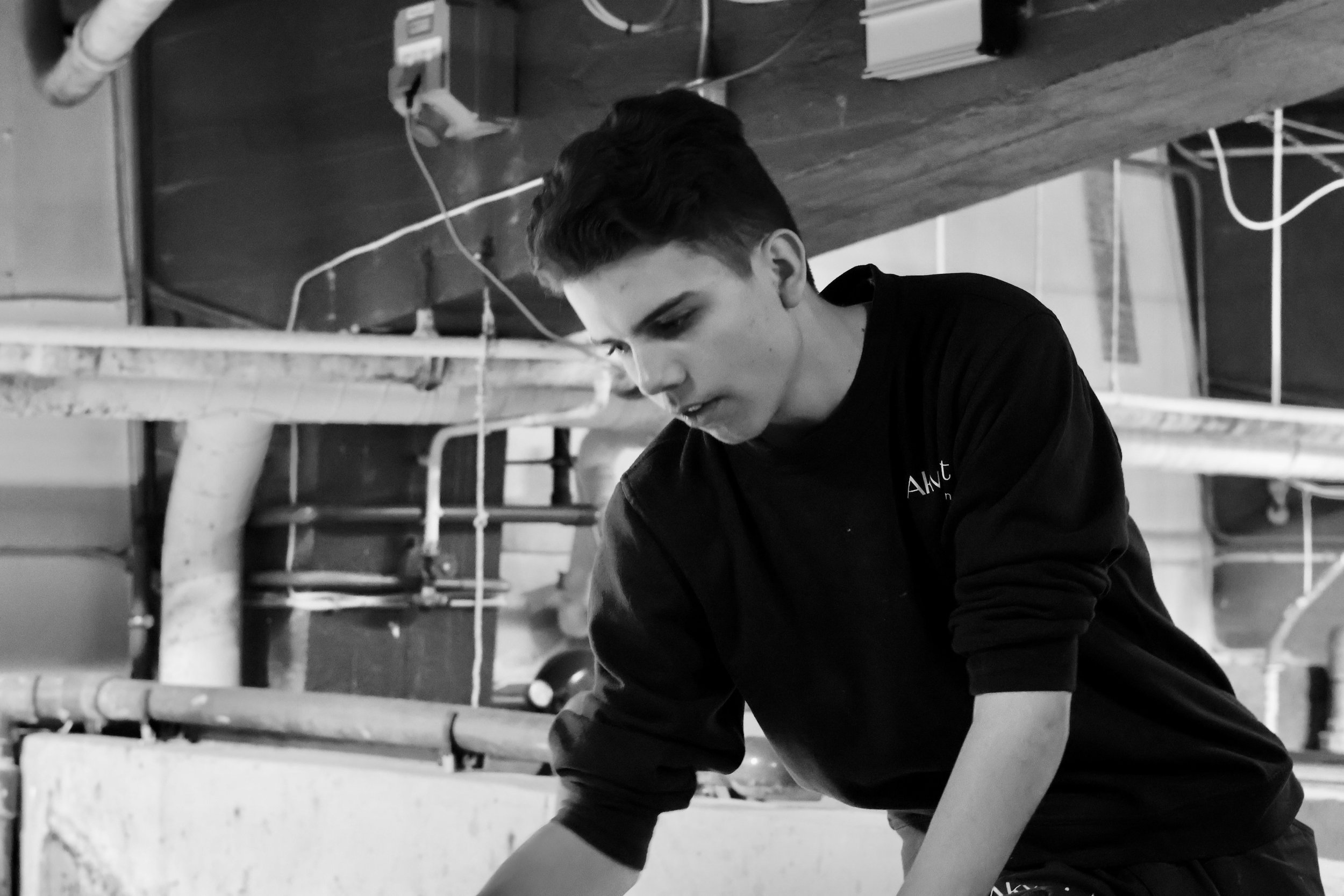From plastic problem to shelter solution
Abdul Foyes, 36, in front of his house in Camp 25, Cox’s Bazar. Photo: NRC
“My house is not in good condition,” reveals Abdul Foyes. A Rohingya refugee living in Bangladesh, he struggles to cope with the effects of extreme weather on his small bamboo shelter. But an innovative new project is aiming to provide a solution to his problems – in the unlikely form of recycled plastic.
Abdul lives in Cox’s Bazar, Bangladesh— one of 880,000 residents of the largest refugee camp in the world. Refugees here face many challenges, one of which is the fragility of the materials used to build shelters in the camps.
In line with Government regulations, no permanent shelter construction is permitted in the refugee camps. This means that the materials currently in use are not made to last and cannot properly protect people from the severe weather of coastal Bangladesh.
Commonly used materials such as bamboo and tarpaulin can also be highly flammable, which was shown to deadly effect in the recent devastating fires in Cox’s Bazar that killed at least 15 refugees and displaced over 48,000.
“Everything is broken,” says Abdul, 36. “Water leaks in during the rainy season and it’s too cold in winter. Then it gets hot in the summer because of the tarpaulin roof.”
An innovative approach to plastic waste
In 2020, almost 46 per cent of Rohingya households reported rotten or damaged bamboo in their shelters. The recent fires underscored the need for safe and sustainable housing solutions in Cox’s Bazar.
These challenges, coupled with awareness of the negative local and global impact of plastic pollution, inspired Norwegian Refugee Council (NRC) staff in Bangladesh to look for solutions that also address the pressing problem of plastic pollution.
Their ideas resulted in a new project proposal that won NRC’s Innovation Challenge in the “Good for the environment” category, made possible due to support from the Grieg Foundation.
The project is called “Using plastic waste to produce humanitarian shelter materials and supplies”. NRC is partnering with Field Ready, with research support from MIT’s D-Lab, to figure out if existing plastic waste and recycling methods can be used to produce shelter materials such as panel bricks and roofs. will then analyse local market capacity to see if it’s possible to scale up production.
Ultimately, the refugee communities themselves will determine if this initiative is viable and can make life a little better for displacement-affected people.
A typical shelter roof made of tarpaulins and bamboo. Photo: NRC
Abdul is a firm believer in the potential of recycled plastics. “My house is made of plastic – for example, the fence, roof, bucket, water bottle etc. It is better for us to make something new with the plastic waste,” he says.
Recycling plastic to make new products would not only benefit people living in camps. The new businesses required to make the products would also benefit local communities, providing job opportunities for people with different skill levels.
Plastic can be a solution, not a problem
Alexander Davies is the shelter programme development manager with NRC Bangladesh. He is passionate about the plastic waste project.
“I really believe that plastic pollution is one of the biggest challenges facing us today, and one that every person can play a role in overcoming,” he says.
“By working alongside local communities and businesses, we hope to show that there is an intrinsic value in plastic waste, and that its reuse has the ability to be the solution to many problems, rather than being a problem requiring many solutions.”
The lessons from the project will be shared to contribute to development and learning within the humanitarian sector. We hope this project will prove that it’s possible to act for both people and the environment.
Do you have questions or want to learn more? Contact Alexander Davies, Shelter Programme Development Manager, at alexander.davies@nrc.no
Related stories
STORIES FROM OUR PRIORITY AREAS
All · Children & youth · Music & culture · Health & research · Climate action · Social impact investment





